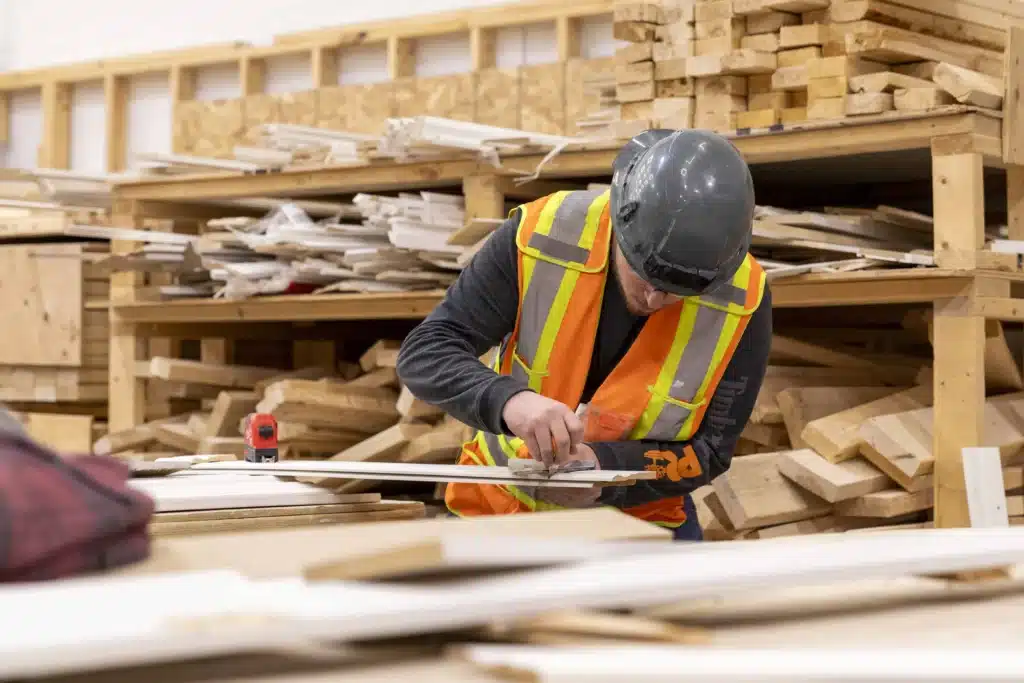How to Spot the Signs Your Website Is Holding Back Growth
If you’re a contractor in the Bay Area, your website is often a client’s very first impression of your business, and as you know, first impressions matter. Too often, though, contractors are stuck with sites that feel like they were built back in 2011, or haven’t been updated since the day they launched. The problem isn’t just about looks. An outdated site can quietly chip away at trust, hurt conversions, and signal that your company needs a professional website redesign for contractors.
The good news is that recognizing the signs of an outdated website is the first step toward turning things around. Once you know what red flags to watch for, you can move forward with a thoughtful website redesign that not only looks modern but actually supports your long-term growth. A well-designed contractor website doesn’t just exist online, it works for you, helping you win the kinds of projects and clients you truly want.
5 Signs It’s Time to Redesign Your Contractor Website
1. Your Site Looks Outdated on Mobile
Nearly every lead is pulling up your website on their phone. If your site forces them to pinch and zoom, or loads slowly, they won’t stick around. In 2025, a site that isn’t responsive is basically invisible – to search engines and your potential clients.
2. You’re Not Showing Up in Local Search
If a homeowner in Oakland searches “remodeling contractor near me” and your site doesn’t show, your design isn’t doing its job. Search engines reward updated, fast-loading websites. An outdated design can drag down rankings, even if your actual work is excellent. A website redesign for contractors improves visibility, rankings, and engagement.
3. You’re Missing Clear Calls to Action
A strong contractor site doesn’t just show past projects, it drives the next step. If your site hides your phone number or makes “Request a Quote” hard to find, you’re losing conversions. Each section should be leading the lead through a journey to learn about your company and contact you.
4. It Doesn’t Reflect Who You Are Now
Many contractors in the Bay Area evolve fast, expanding from residential to commercial work, or scaling up teams. If your site still shows you as a solo operator, it sends the wrong message.
5. Clients Have Mentioned It Looks “Old”
This one stings, but it’s honest. If people are telling you your site looks dated, take it seriously. Perception is reality online. Others may be thinking the same thing, and you won’t know it because they just simply find another contractor.
How a Website Redesign for Contractors Builds Long-Term Growth
Redesigning your contractor website isn’t about vanity. It’s about:
- Winning trust faster with a modern, clean design
- Capturing more leads by making calls-to-action impossible to miss
- Ranking higher locally with better speed and structure
- Showing growth so clients see your business scale with confidence
- Saving time by reducing calls about basic info (like service areas or hours)
- Positioning for the future with a site that can grow with you, not against you
Need help with your Bay Area marketing pages? Let’s talk.
A Real Redesign Example: Briscoe Firm
The Briscoe Prows Kao Ivester & Bazel, LLP website dated back to 2011. It wasn’t mobile-friendly, had very little information, and gave off the impression of a law firm that had billed its last hour. As a growing environmental law firm, they needed a brand presence that matched their reputation and ambition.
We built them a site that the entire firm loved. (Hard to do). The redesign gave their brand an image of class and sophistication that outshined competitors. It now converts leads into clients, includes high-quality imagery, and features a newsletter/blogging function to support ongoing visibility.
Even though Briscoe isn’t a contractor, their journey shows exactly why a website redesign for contractors matters: when your website feels outdated, clients assume your business is outdated too.
See more of our work at Tenaya360 Projects.
A Launch Example: Curbside Solutions
On the other end of the spectrum, Curbside Solutions was brand new, website design started from zero. They needed more than a marketing site, they needed a digital hub to run their business. We built a website that allowed customers to:
- Learn about service offerings
- Sign up and create an account
- Manage billing and subscriptions online
The site became their anchor point for marketing while also handling operations. On top of that, they signed on for Tenaya360’s website care and support service, giving them confidence that every aspect of their digital presence was covered.
For new businesses, a strong website at launch isn’t just optional, it’s the foundation for growth.
How to Decide If Now Is the Right Time
If your site looks dated, every visitor who clicks away is money lost. Here’s a framework contractors can use to think it through:
The Cost of Doing Nothing
- Lost trust: Clients assume you cut corners offline too
- Wasted ad spend: Ads drive traffic, but an old site kills conversions
- Missed referrals: Even word-of-mouth leads still check your website first
A Mindset Shift: Expense vs. Growth Tool
Think of redesigns not as “another bill” but as part of long-term business planning. Just like upgrading equipment or hiring skilled labor, a better website pays back in leads, time savings, and reputation.
Timeline to Keep in Mind
- At launch: you need a functional, credible website to prove legitimacy
- After growth: as you expand, your site should showcase your updated services and scale
- Every 5-7 years: technology shifts so fast that even a good site eventually feels old
If you’re hitting one of these milestones, it’s time to act.
Step-by-Step: Planning Your Website Redesign
Step 1. Identify the Red Flags
Review your site honestly. Is it mobile-friendly? Does it reflect your current services? Do clients comment that it feels outdated?
Step 2. Set Clear Goals
Decide what the redesign should accomplish. Do you want more quote requests? Better SEO visibility? Stronger branding?
Step 3. Choose the Right Partner
Not all web designers understand contractors. Look for a Bay Area partner who knows how small businesses scale, not just how to make a site look good. (See our web design services here.)
Step 4. Budget and Timeline
Most contractor website redesigns take 4-6 weeks. Plan ahead so your busy season isn’t interrupted.
Step 5. Launch and Keep Improving
A redesign isn’t the finish line. Keep updating with new project photos, testimonials, and seasonal promotions. That’s how you stay ahead.
Website Redesign for Contractors vs. Patch Jobs: Which Do You Need?
Sometimes, a few updates can hold you over, like swapping out photos or refreshing your copy. But if you’re dealing with:
- Broken links
- Poor mobile performance
- Outdated branding
- No clear funnel for leads
…it’s time for a full website redesign for contractors. Anything less is a band-aid.
Wrapping Up
If your contractor website shows these red flags, don’t wait until another lead slips away. A modern, trustworthy site is one of the best investments you can make in scaling your business.
The best time to redesign was probably two years ago. The second-best time is now.
Don’t wait until you’re desperate for work to fix your digital presence. The most successful Bay Area contractors treat their website as essential business infrastructure not an afterthought.
If you recognized your site in three or more of these red flags, it’s time to act. Your competition isn’t waiting, and neither should you.
Ready to scale up your business? Get a free audit.
Ask Jack.







